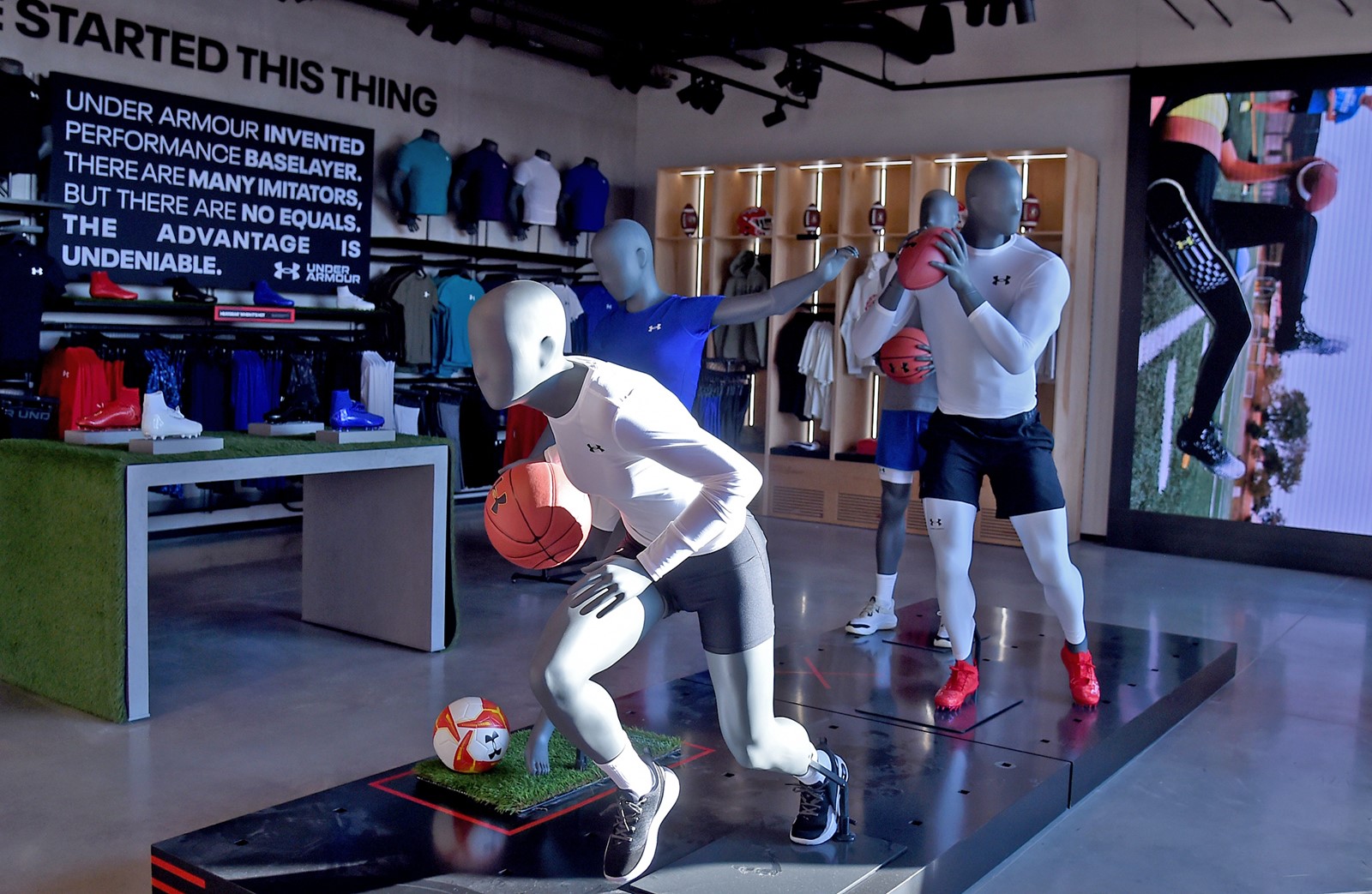
Amid uncertainty about whether evolving U.S. trade policies will dampen consumer demand, Baltimore-based Under Armour is considering ways to minimize the impact of tariffs on its business.
The sports apparel and footwear company stopped short of offering its usual long-term outlook Tuesday when it announced end-of year financial performance. But an ongoing brand reinvention is expected to help navigate economic uncertainty, executives said.
Under Armour and other U.S.-based retailers that rely on overseas manufacturing are bracing for the full impact of sweeping, multi-nation tariffs announced last month by President Donald Trump.
The administration, which imposed what are essentially taxes on imports as a way to balance tariffs with trading partners and restore U.S. manufacturing, has modified the levies and paused some as it aims to negotiate foreign trade deals.
Economists and supply chain experts have criticized broad-based tariffs as harmful to consumers and the economy, with prices expected to rise on apparel, mobile phones, furniture, cars and imported food.
“Tariff policies are currently in constant flux, leaving retailers and consumers unnerved,” associate consultants at Clarkston Consulting, a Durham, North Carolina-based consumer products consulting firm, said in a report last month. “For U.S. retailers, this can mean higher costs for imported goods, uncertainty in pricing, and a shift in consumer behavior.”
Companies that already have raised prices include Stanley Black & Decker and Yeti, while Adidas has warned of higher prices on U.S. products, according to reports.
On Tuesday, Under Armour said it hasn’t yet seen the tariff policies’ full impact.
“However, since changes in trade policy are expected to have a significant impact, we are proactively evaluating a range of mitigation strategies,” David Bergman, Under Armour CFO, said Tuesday during a call with analysts.
He said the Baltimore-based brand is exploring sharing costs of the tariffs with “key partners,” diversifying the company’s sourcing footprint and making targeted pricing adjustments on new and existing products.
Under Armour gear is manufactured mainly overseas, with 30% of the volume coming from Vietnam, 20% from Jordan and 15% from Indonesia, but the rest comes from a mix of nations.
Tariffs likely will prompt some U.S. retailers and manufacturers to re-evaluate shifting production to the U.S. to avoid the taxes, said Ravi Srinivasan, professor of operations and supply chain management at Loyola University Maryland’s Sellinger School of Business. But many won’t have the capacity to move entire product lines. Companies will have to determine which products can withstand price increases and which can’t.
“That’s a fine balance that I’m sure Under Armour and pretty much every company has to decide,” he said.
Under Armour had expected a modest decrease in sales for the current fiscal year 2026, which began April 1, in part because of costs associated with entering its second year of a turnaround plan.
The restructuring, an 18-month, $90 million plan announced a year ago, includes steps such as reducing product assortments, especially of discounted items, and speeding up the time to create new products and get them to market. The company is doubling down on pushing its garments’ athletic performance qualities on social media and in stores.
The sports apparel maker’s goal of elevating the brand to a premium position could help over the long term, Sharon Zackfia, an analyst with William Blair, said in a report Tuesday.
But “we believe it will take time to unfold, with increased uncertainty related to tariffs and a critical mass of new product not expected until the second half of fiscal 2026,” she said.
The apparel maker’s adjusted profit estimates for the first quarter of fiscal 2026, which began April 1, beat Wall Street analysts’ expectations, the company said Tuesday. Shares of Under Armour closed up 6 cents per share Tuesday at $6.27 each.
Sales for the first quarter of fiscal 2026 are expected to decline 4% to 5%, profit margins should improve and a loss of up to 2 cents per share is expected amid restructuring. On an adjusted basis, the company expects earnings of 1 cent to 3 cents a share.
Zackfia said upcoming risks for Under Armour include the company’s ability to maintain a strong brand image in an industry with stiff competition.
Bergman said the company has been getting positive feedback on spring and summer 2025 product, with improvements in design and style. Looking toward the fall and spring of 2026, “at this point even with the tariffs and uncertainty, we’re not seeing any key partners with cancellations,” he said.
Under Armour reported a net loss Tuesday of $67 million, a loss of 16 cents per share, for the final three months of its fiscal year which ended March 31. Net loss when adjusted for expenses was $35 million, or a loss of 8 cents per share, which met Wall Street estimates.
Under Armour topped analysts’ forecasts for fourth-quarter revenue. Sales for the quarter dipped 11%, to $1.2 billion. For the full year, Under Armour had sales of $5.2 billion and a net loss of $201 million, or an adjusted net income of $135 million.
Have a news tip? Contact Lorraine Mirabella at lmirabella@baltsun.com, 410-332-6672 and @lmirabella on X.


 PREVIOUS ARTICLE
PREVIOUS ARTICLE
